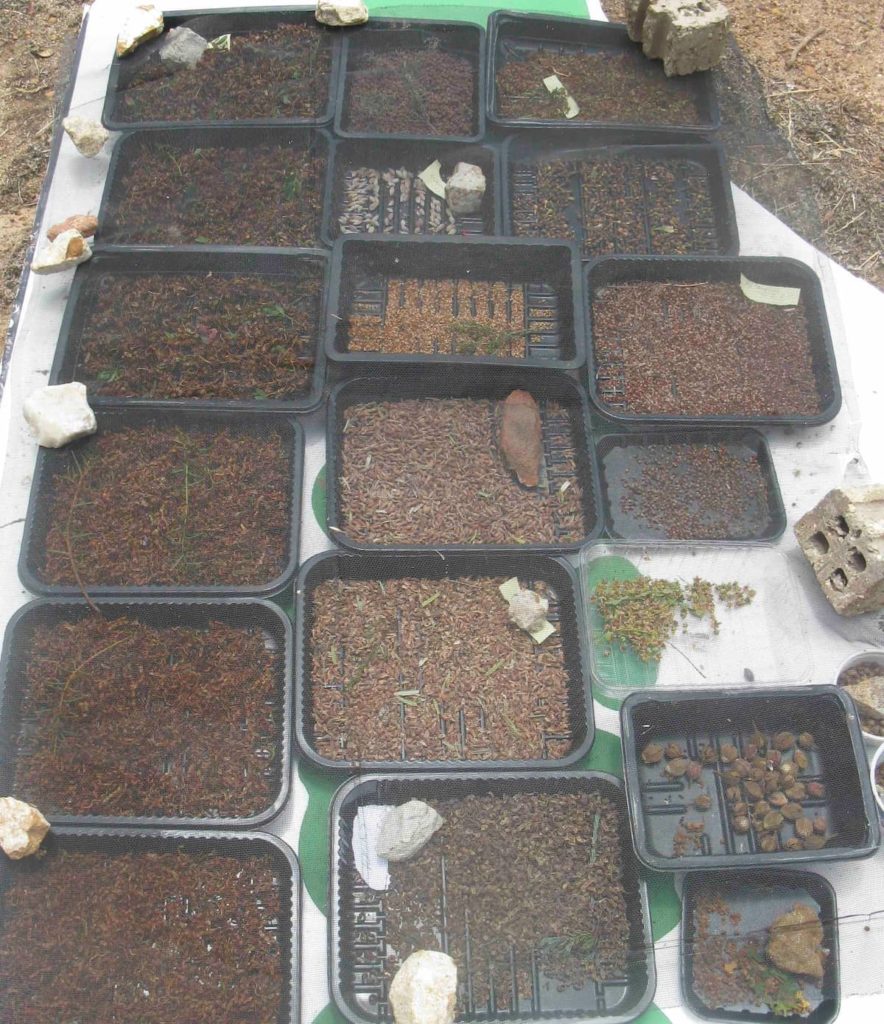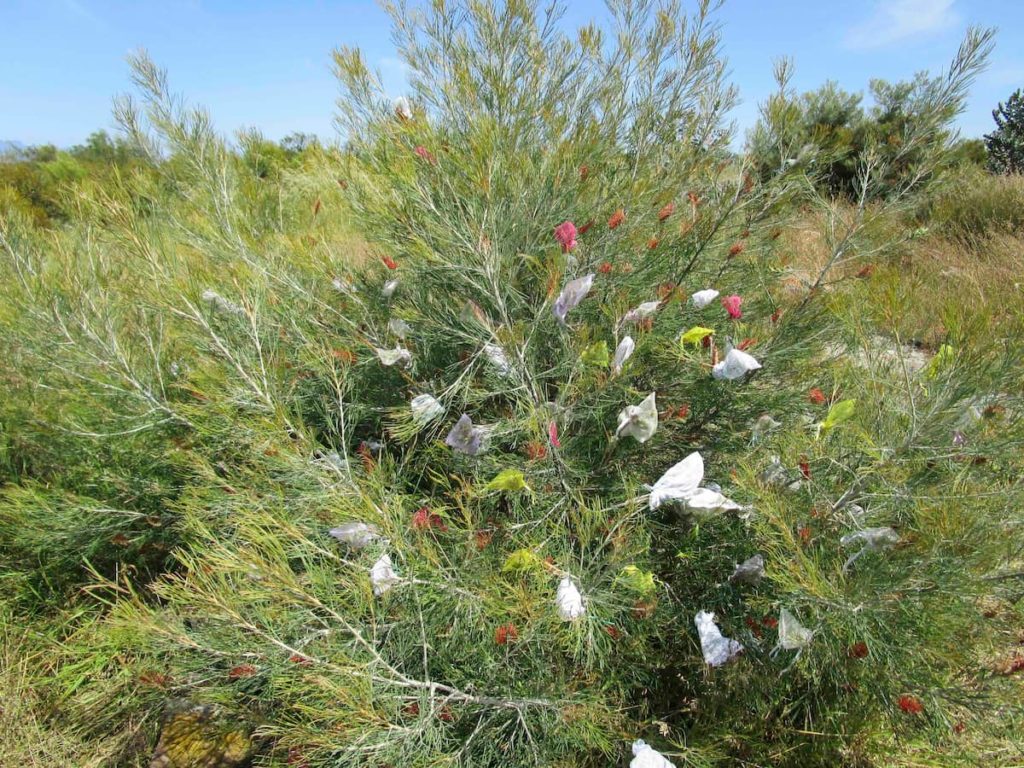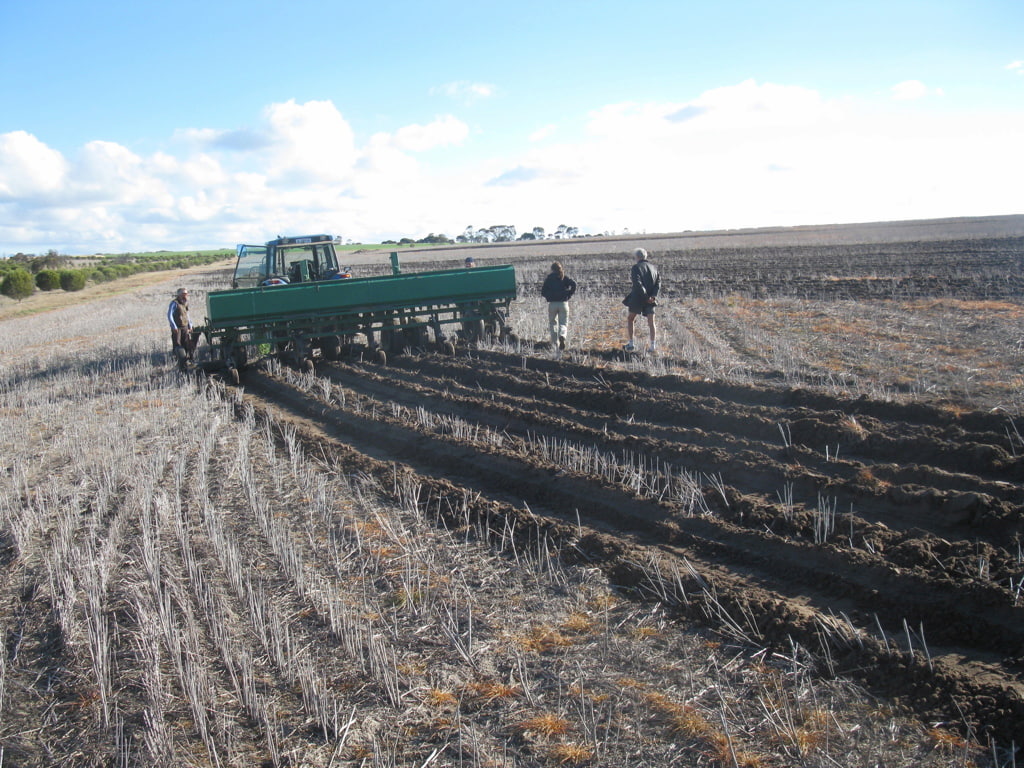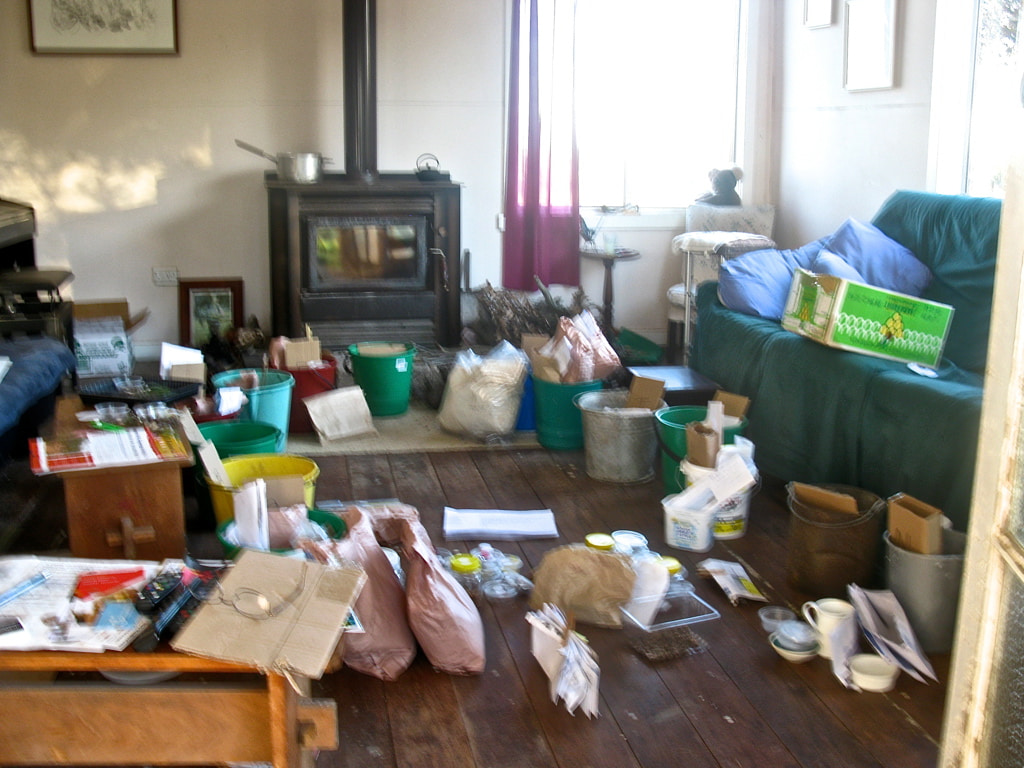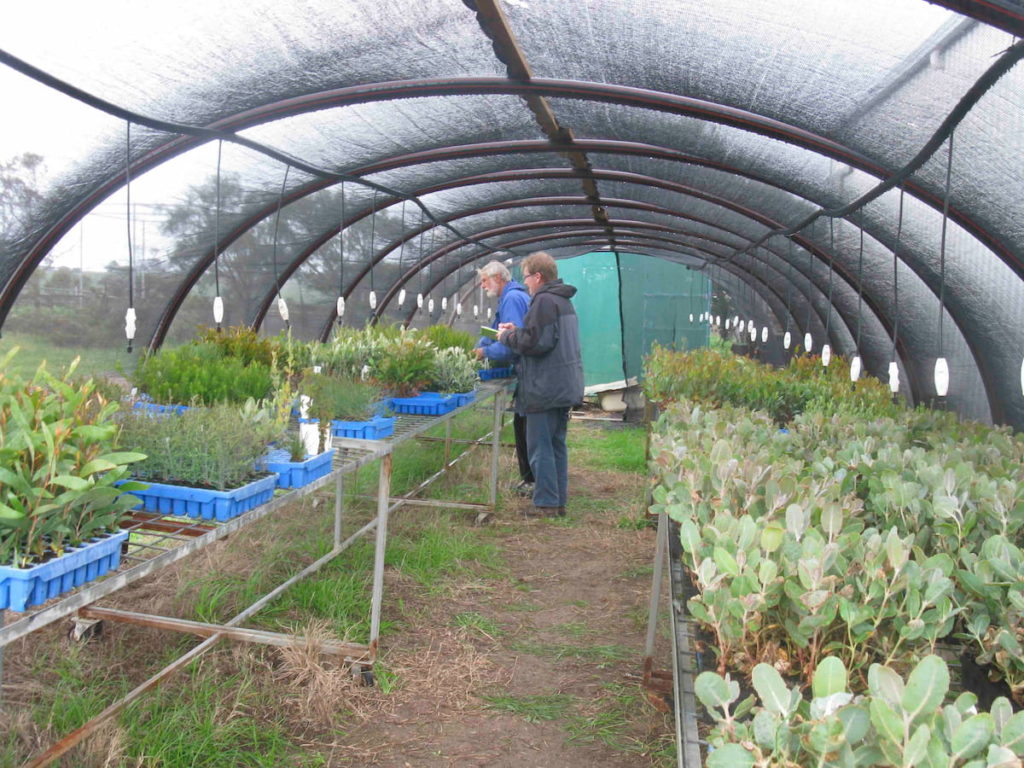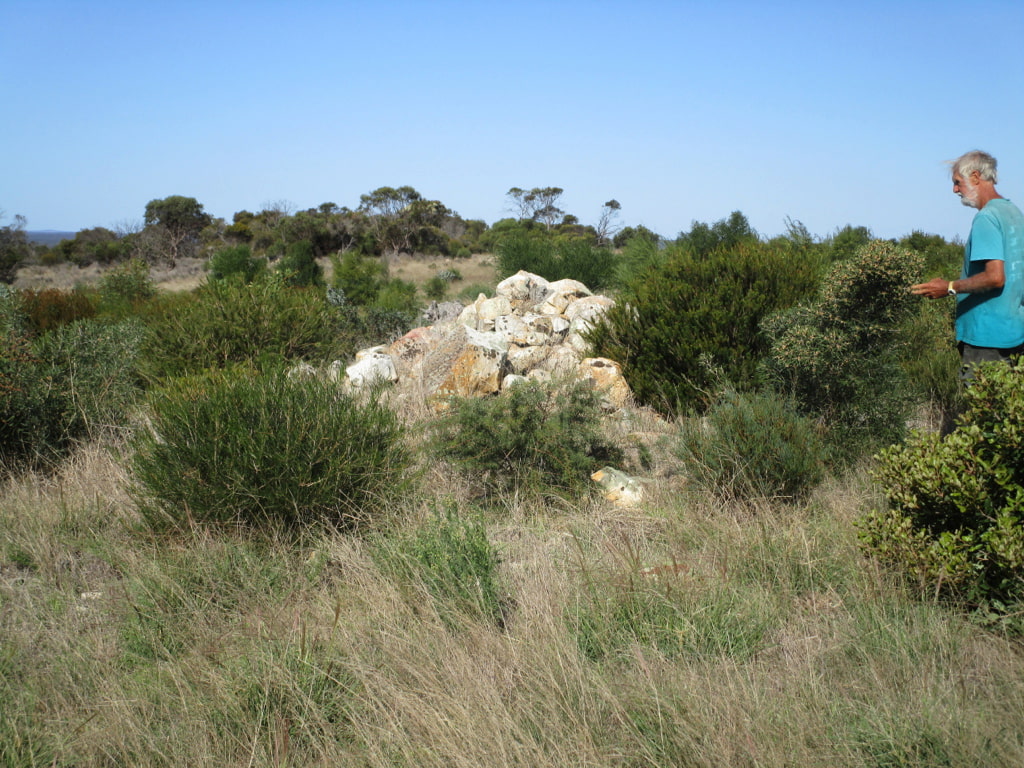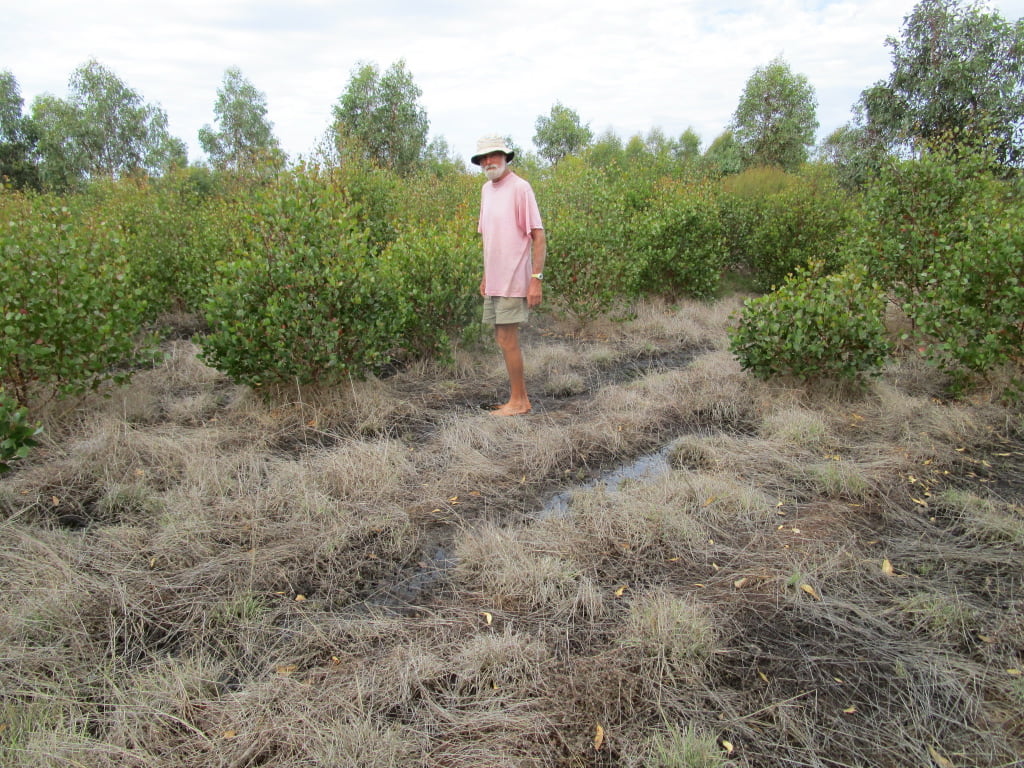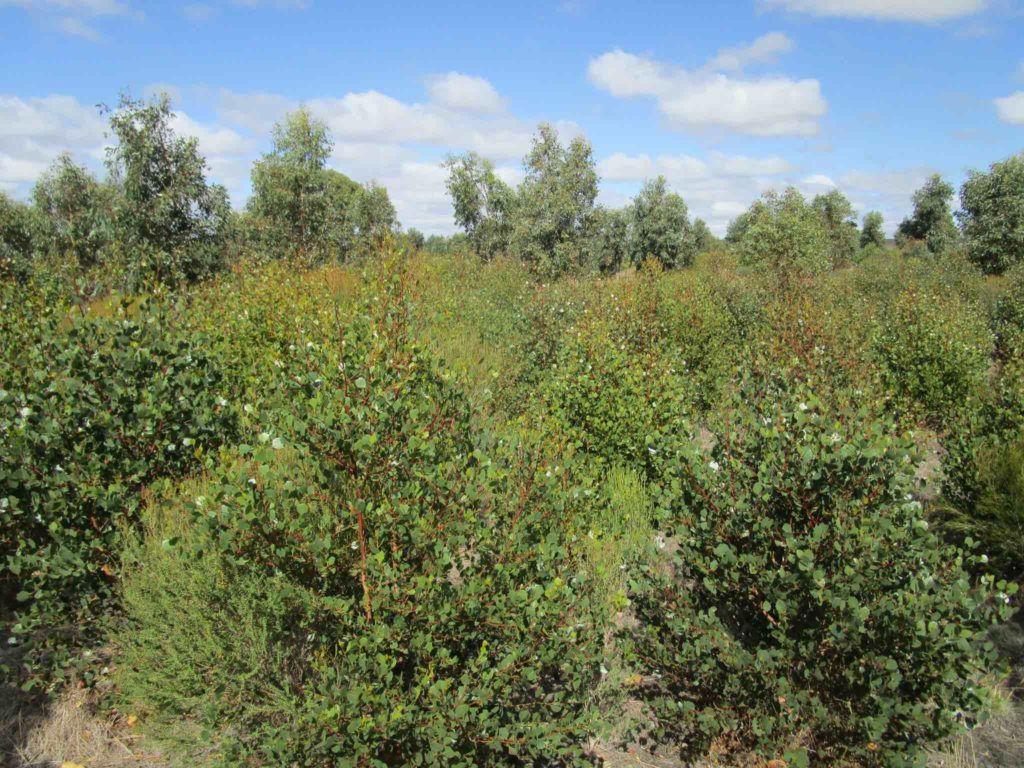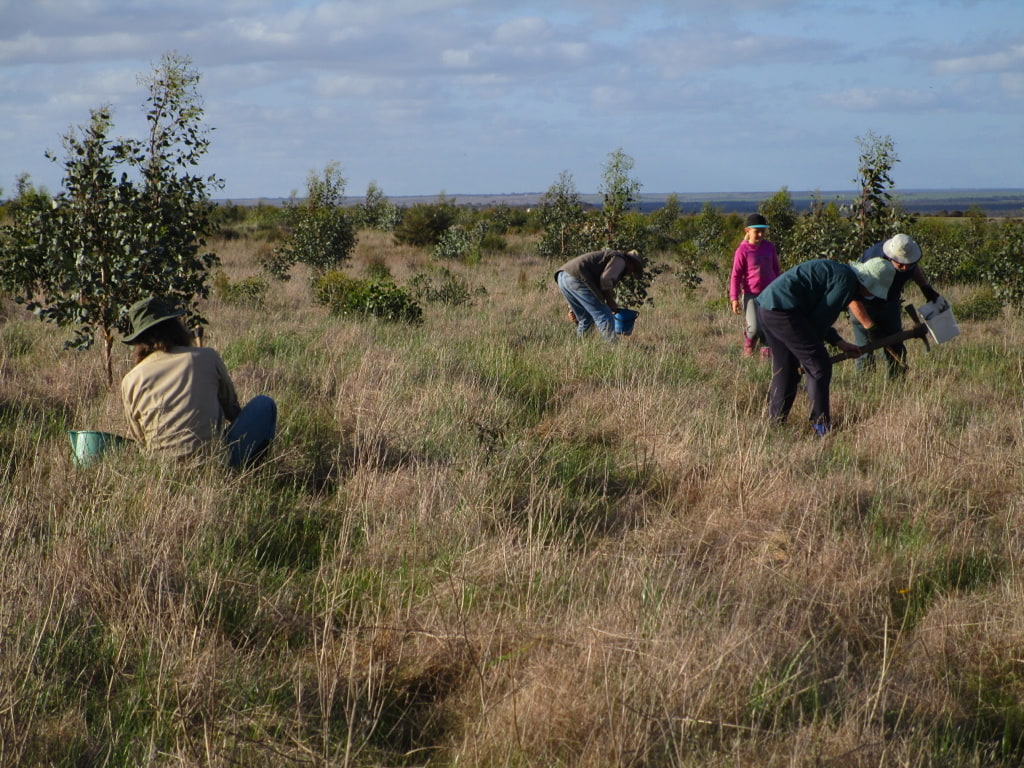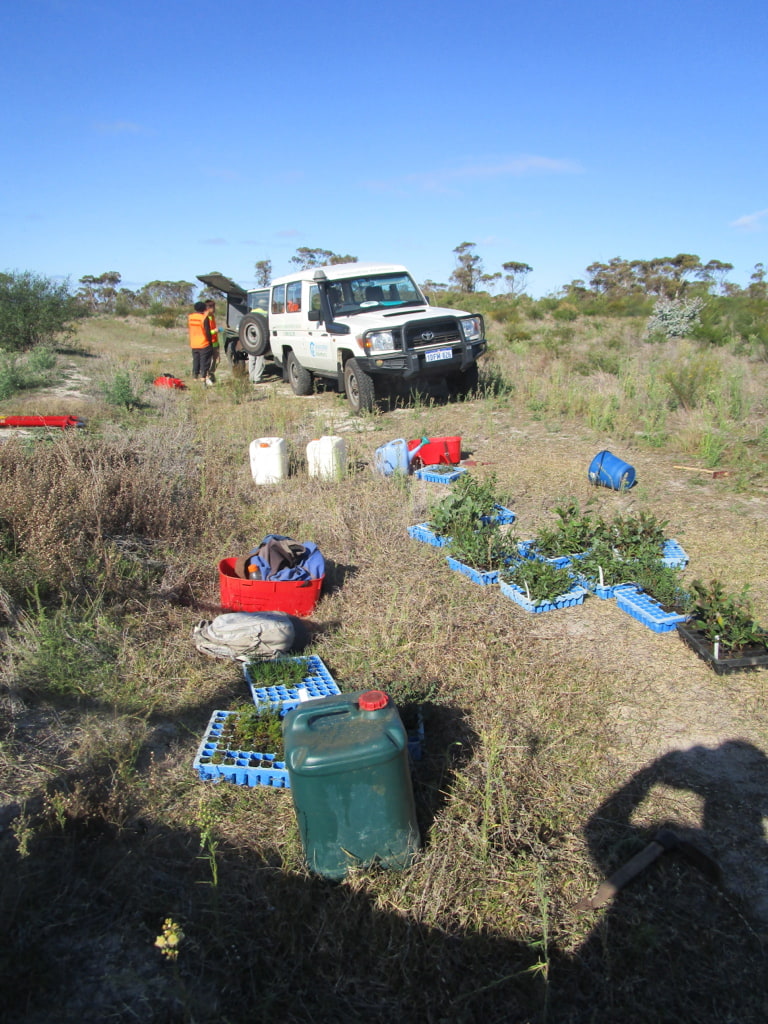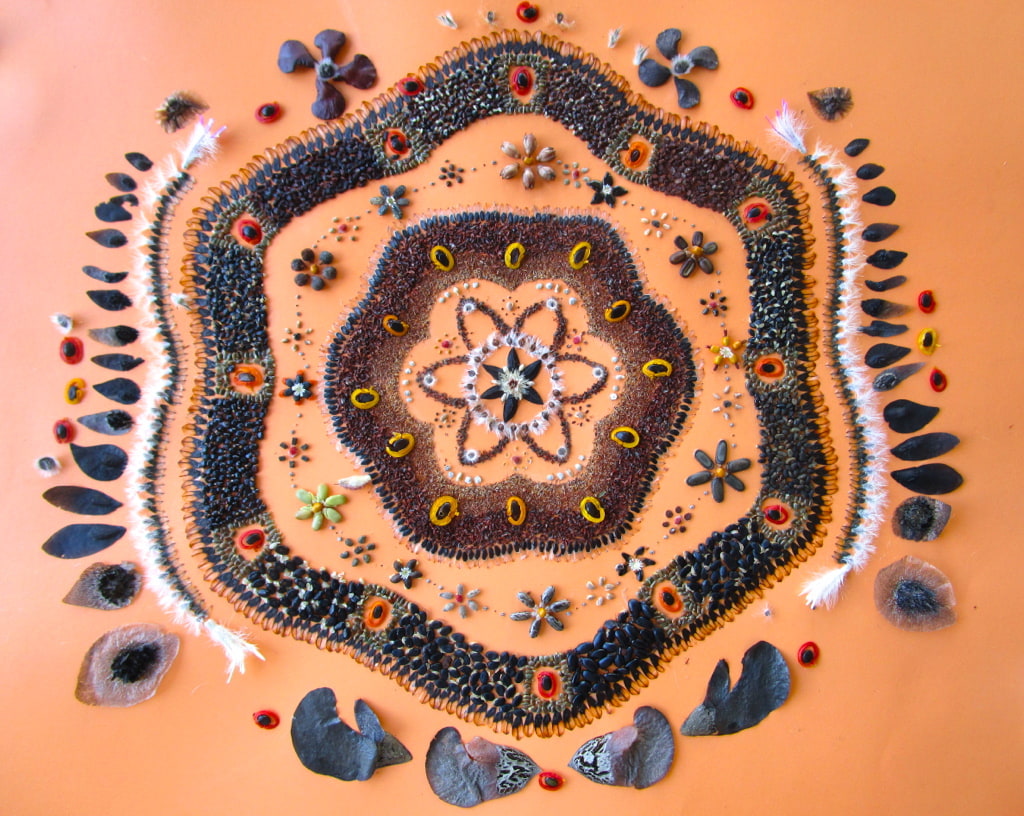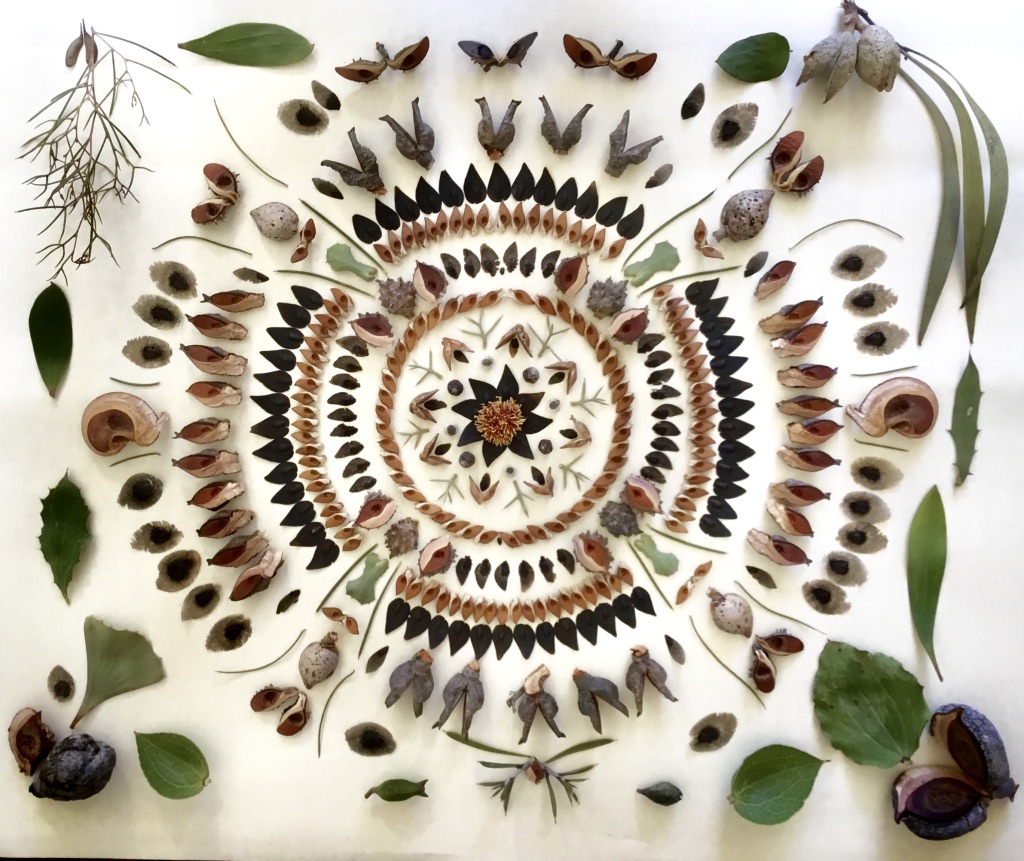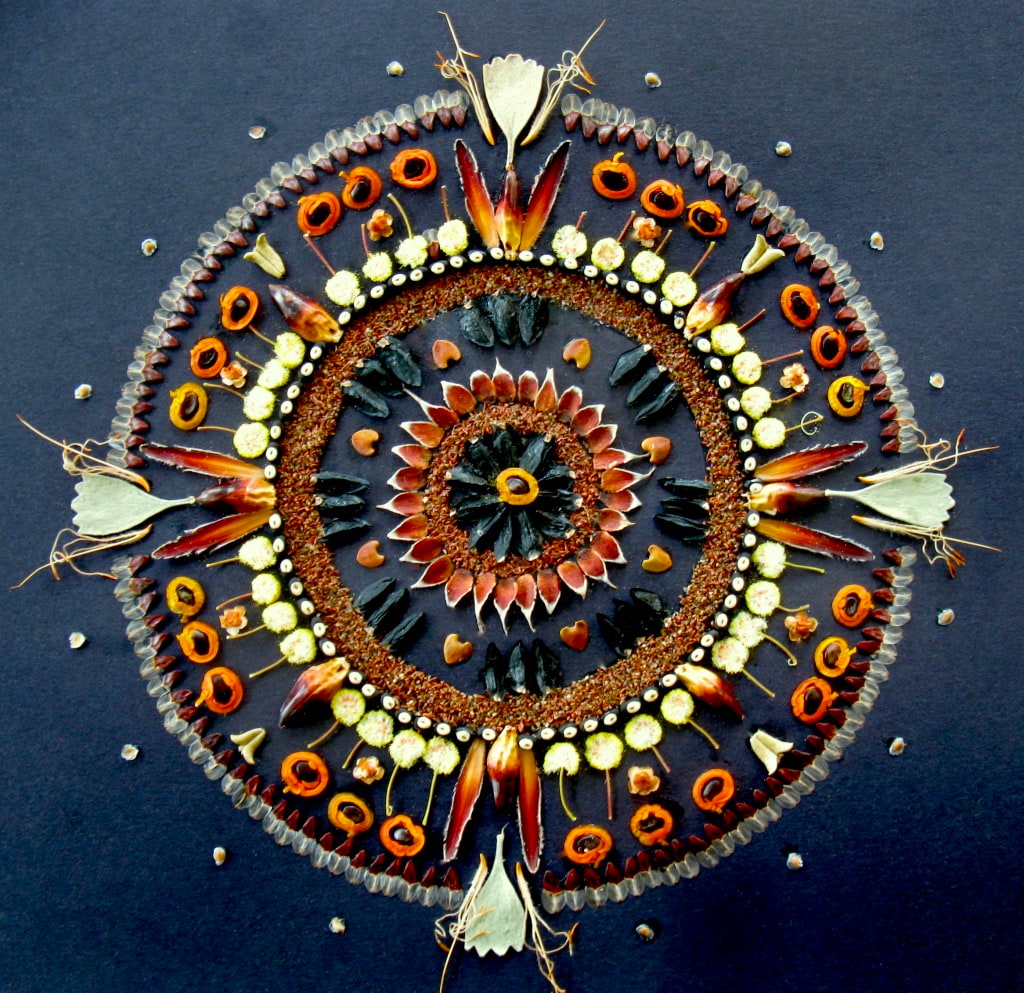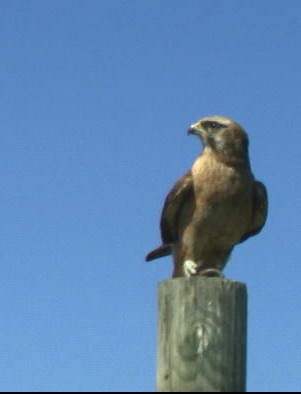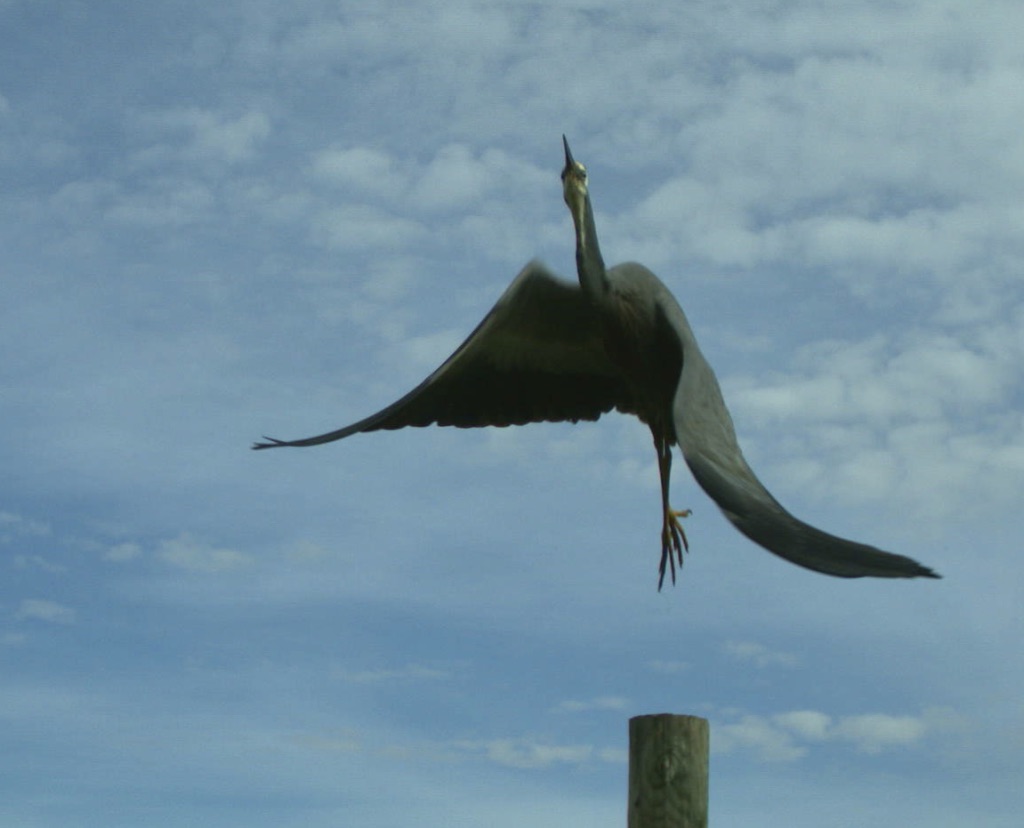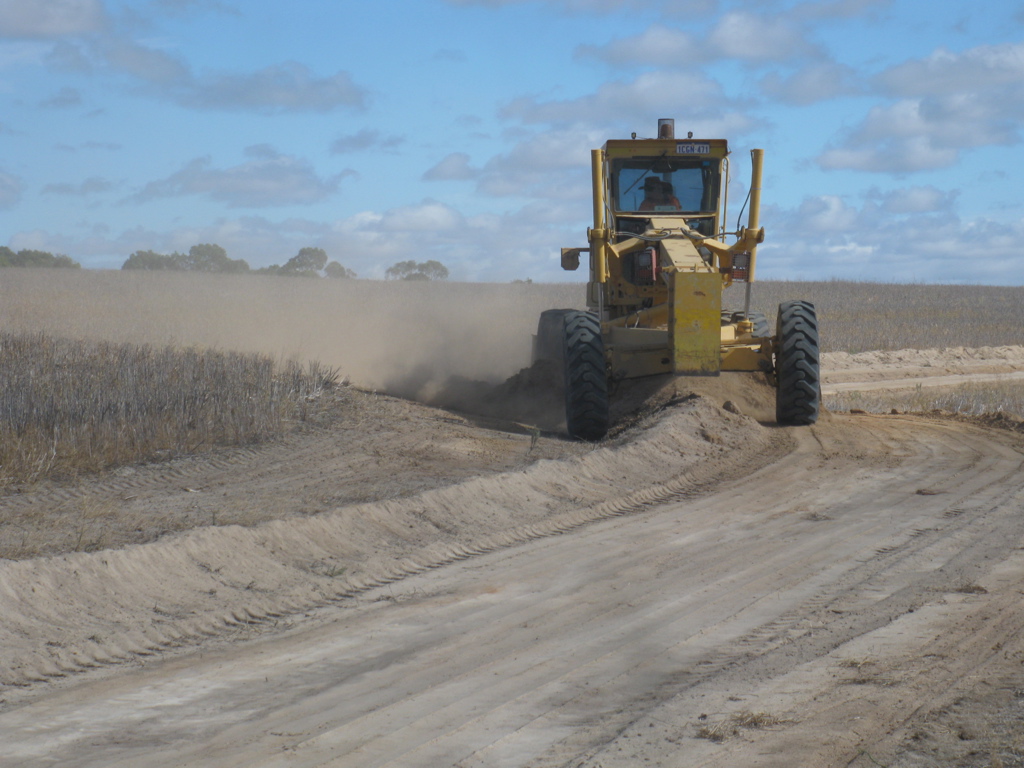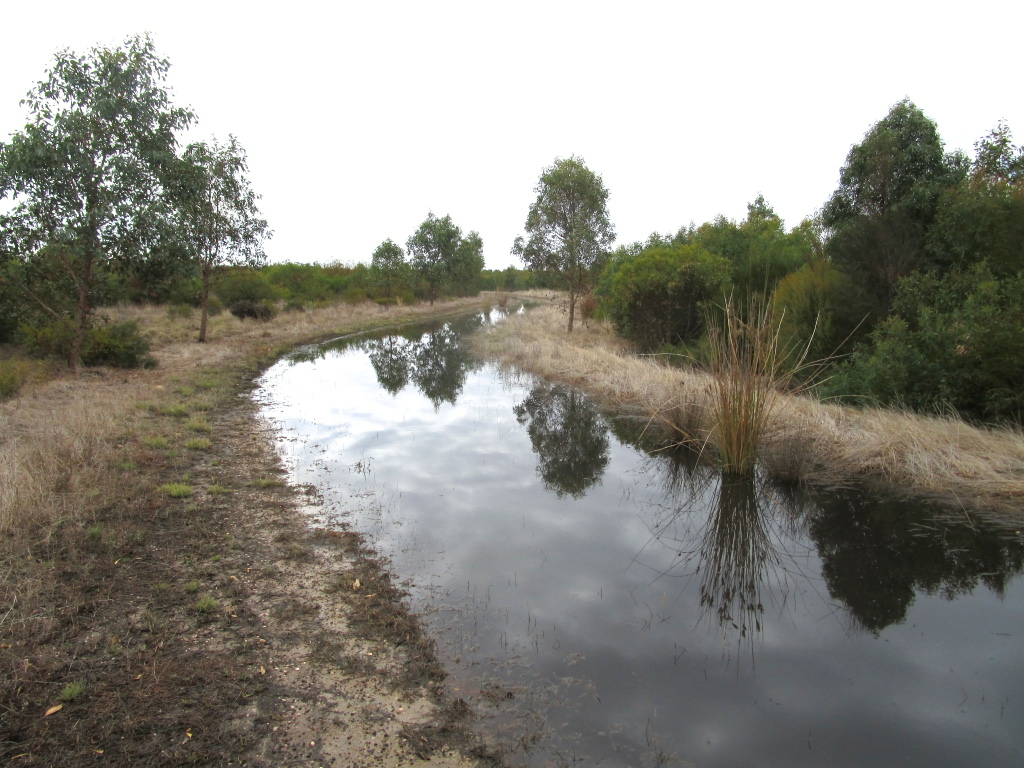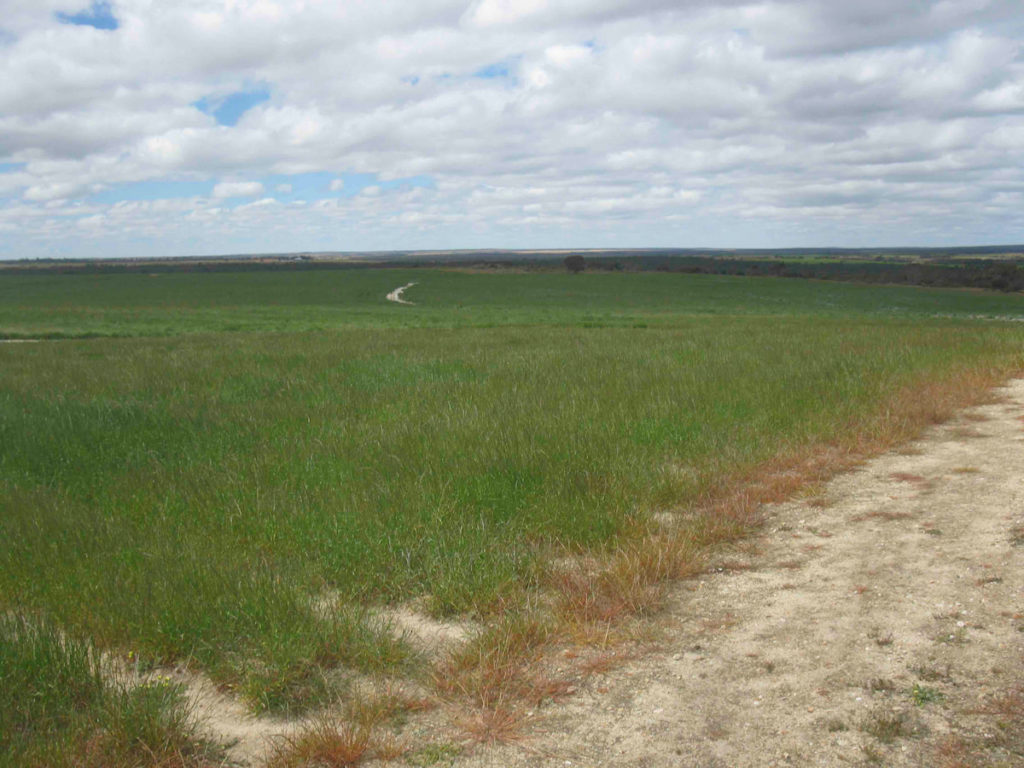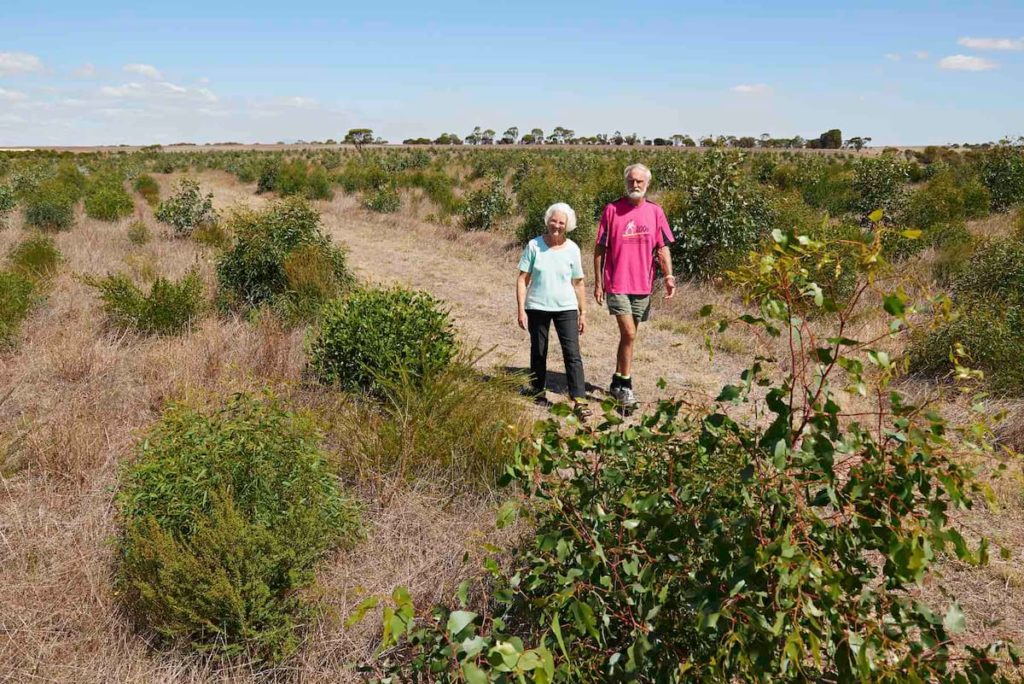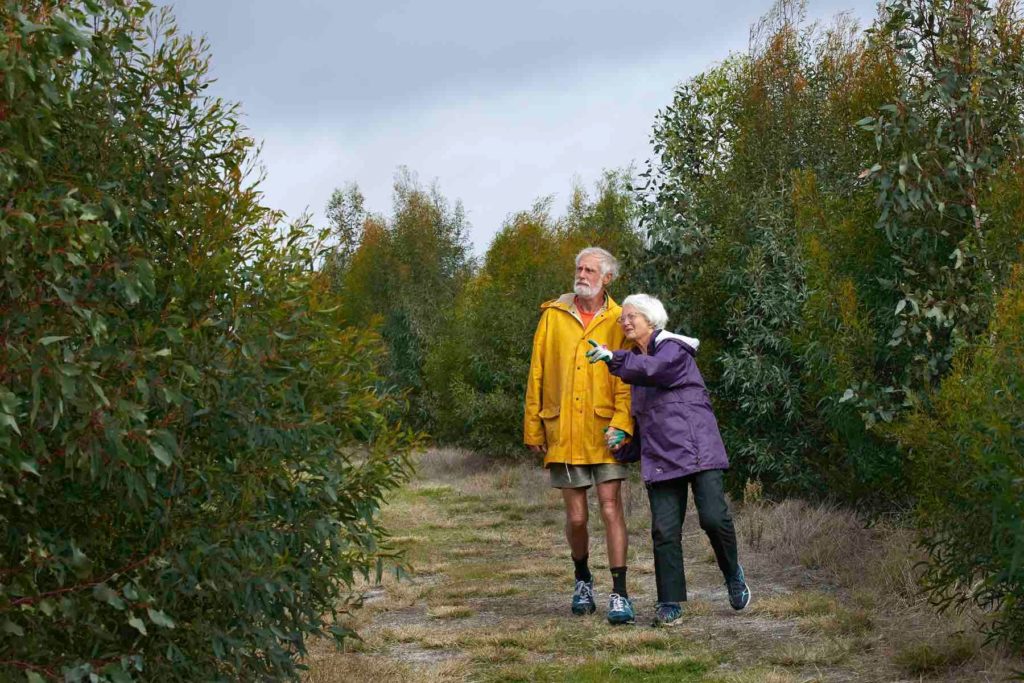Yarraweyah Falls Restoration Project
Filling a gap for Gondwana Link by Bill Thompson

Bill and Jane Thompson planting seedlings
Jane and I always wanted to be active participants in a large conservation project, so when our custard apple farm in Queensland was targeted for a transport corridor it provided us with an opportunity to realise a dream. We have always loved the bush and spent most of our holidays camping and exploring wild places. On a previous trip to Western Australia we were attracted to the Stirling Range – Fitzgerald region.
The amazing biodiversity of the region beckoned so we contacted Gondwana Link about possibilities of joining in their ambitious vision of connecting the landscape from Margaret River to the Western Woodlands and beyond.
After a couple of trips we liked what we saw, especially in the company of such positive people, and in a rush of blood purchased “Yarraweyah Falls” in the heart of the Fitzstirlings. This region of Western Australia is amazingly diverse. If you include our Bush Heritage neighbours’ properties, there are over 900 native species identified so far.

We were made aware of the biodiversity fund and decided to apply for a grant for a 100 hectare biodiverse restoration. The closing date for entries was our settlement date. Our restoration project was fairly unique in that it had input from ourselves, the Federal Government via the Biodiversity Fund and business through carbon offsets facilitated by Carbon Neutral. The majority of the initial restoration costs were contributed by Carbon Neutral and we have signed a “Carbon Right and Carbon Covenant Agreement” with them.
“Yarraweyah Falls” is a 1500 hectare property with 720 hectares of natural bush protected under a conservation covenant with the National Trust. This is adjacent to the Bush Heritage Monjebup property with whom we have formed a partnership agreement. We have retained 400 hectares for cropping which we lease.
The 100 hectare restoration has been the focus of much of our time. Where practicable the area was direct seeded with four different seed mixes.

We provided about 130 species of the seed collected from plants on the property. The direct seeding was augmented with seedlings sourced from ourselves and Threshold Environmental. A similar amount of seed species were scratched in to the rough areas and areas left by the machine where direct seeding was not possible.
We experimented with different treatments including smoked water and gibberellic acid. In the first year some 8000 seedlings were planted. Since the initial planting in 2013 we have been infilling to make the restoration as diverse and self-sustaining as possible. We now have over 280 species in our restoration site.
Absolute chaos reigned in our house as we prepared seed mixes for planting.
We have set up a nursery that can hold 16,000 seedlings in the planting season. It provides us with a facility to experiment with propagation.
There were several wet areas where nothing grew and we have successfully infilled with moorts.
Each year we plant up gaps often with the help of volunteers. This gives us the opportunity to enhance the biodiversity of the project.
Jane has been compiling a herbarium with dried samples, photos and drawings of a few of them. There are some allocasuarinas that have yet to be named.
Jane has been inspired by the amazing biodiversity and has produced some very original art works using seeds. The first picture below incorporated 120 species used in the initial direct seeding and won a prize at a national seed conference we attended in Sydney.
Her latest venture is the publication of a wildflower colouring-in book showing 92 local species.

It has been most rewarding to see the increasing utilisation of the restoration area by the local native fauna. We have regular scientific surveys being conducted and these all point to successful outcomes with better-than-expected results. Numerous possum boxes have been installed.
Our first honey possum caused great excitement.
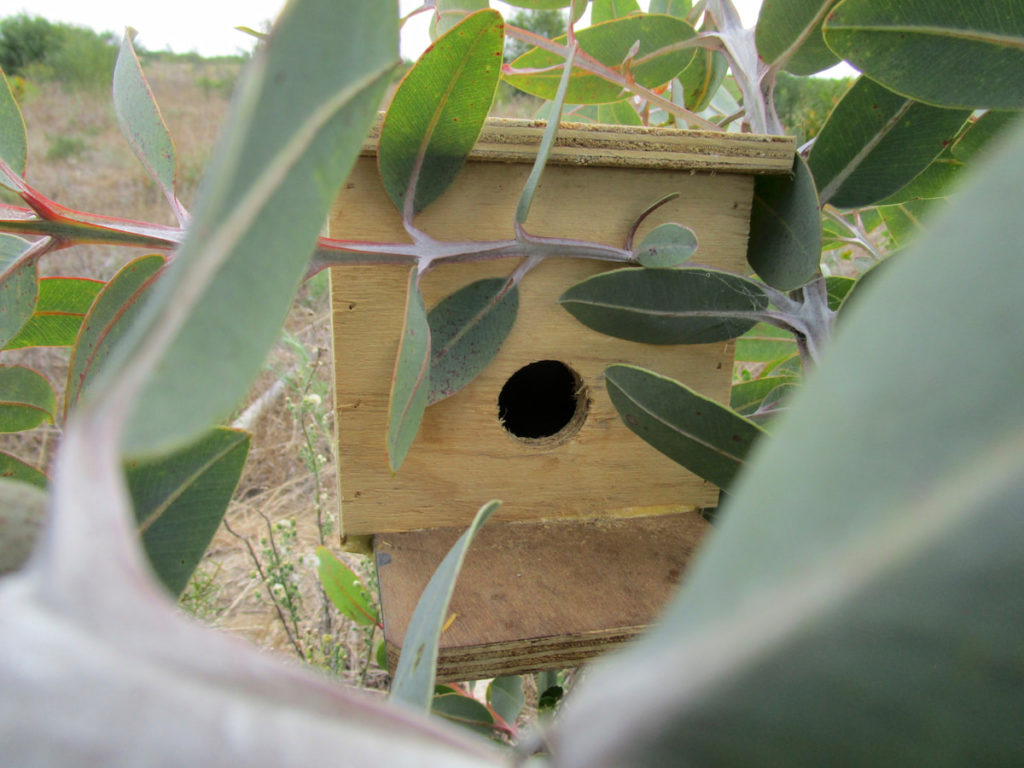
Image: Bill and Jane Thompson 
Image: Bill and Jane Thompson
Sometimes they are utilised by unusual visitors such as social huntsmen spiders. Delena lapidicola (family: Sparassidae).

Many bird species require perching opportunities so we have placed perching poles every few hundred metres. We have recorded nine species utilising the poles, including the Brown Falcon and White Faced Heron shown below.
Our latest addition is the introduction of some bee hotels throughout the restoration area.
Biodiversity of nature at work. Much of the diversity has been introduced to the rough areas.
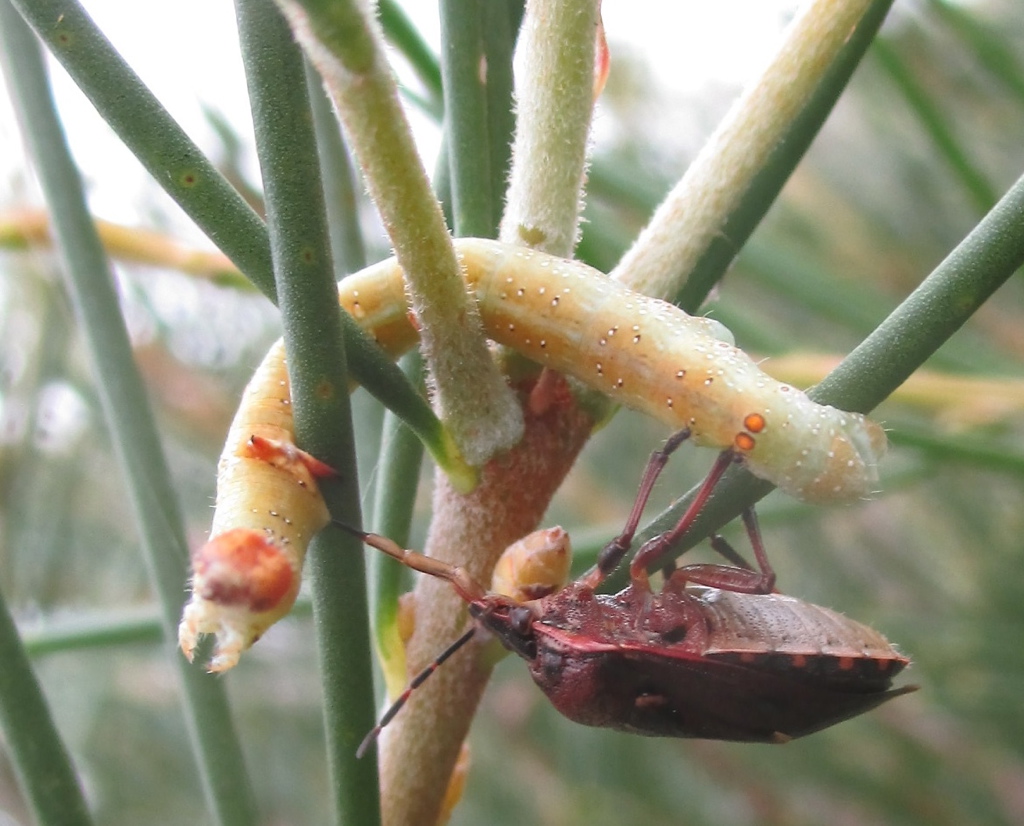
Image: Bill and Jane Thompson 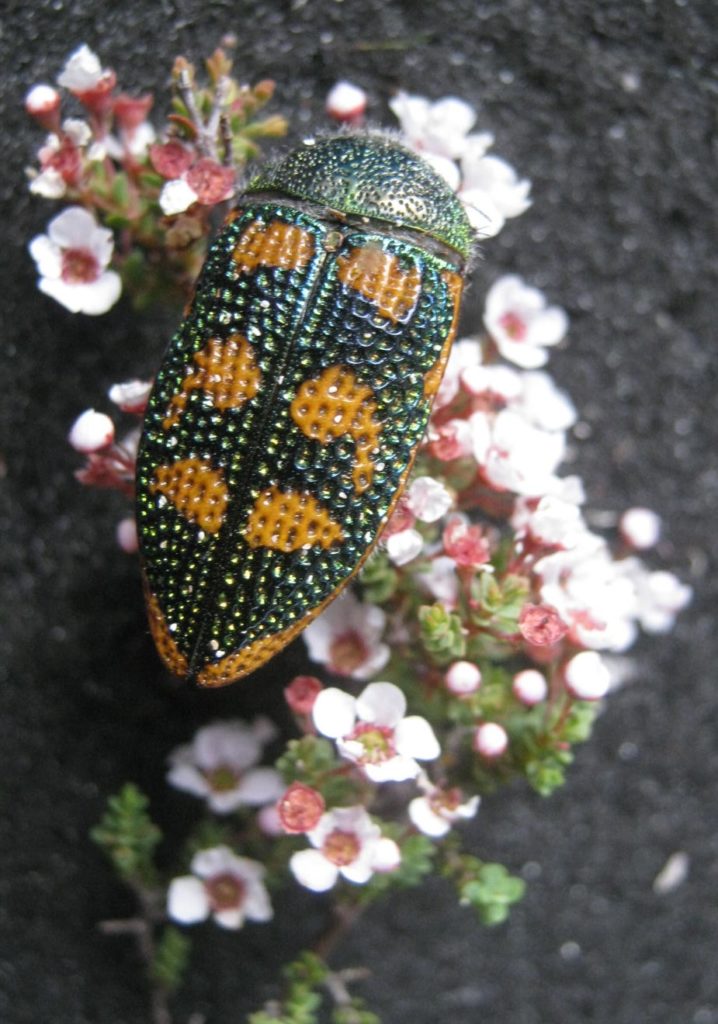
Image: Bill and Jane Thompson 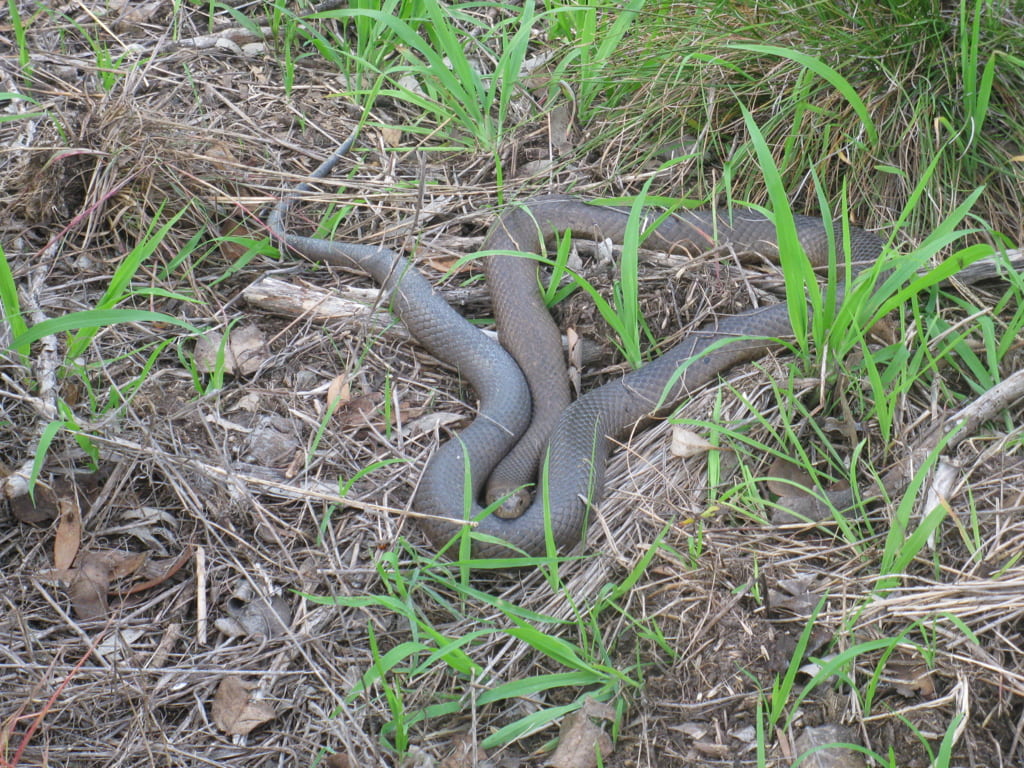



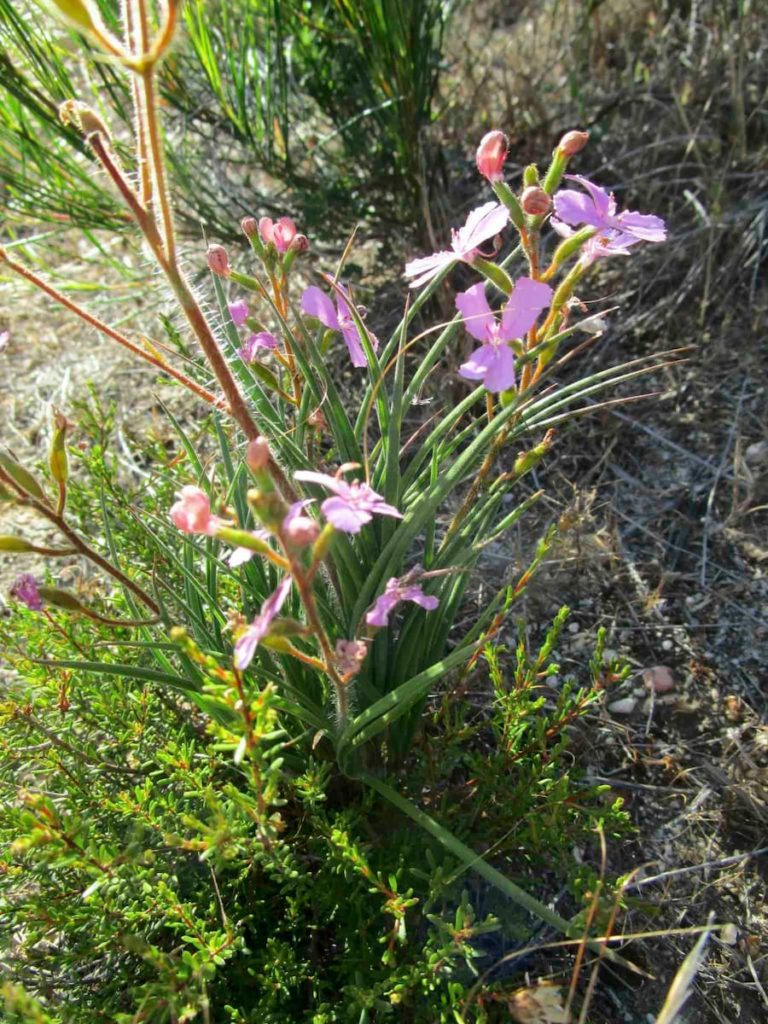
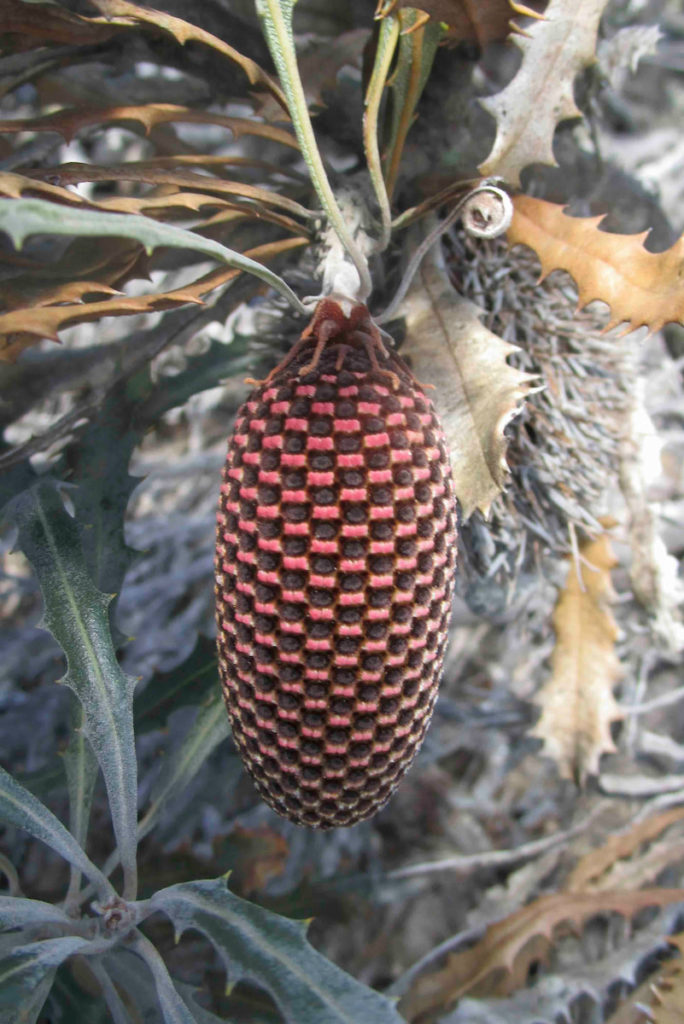

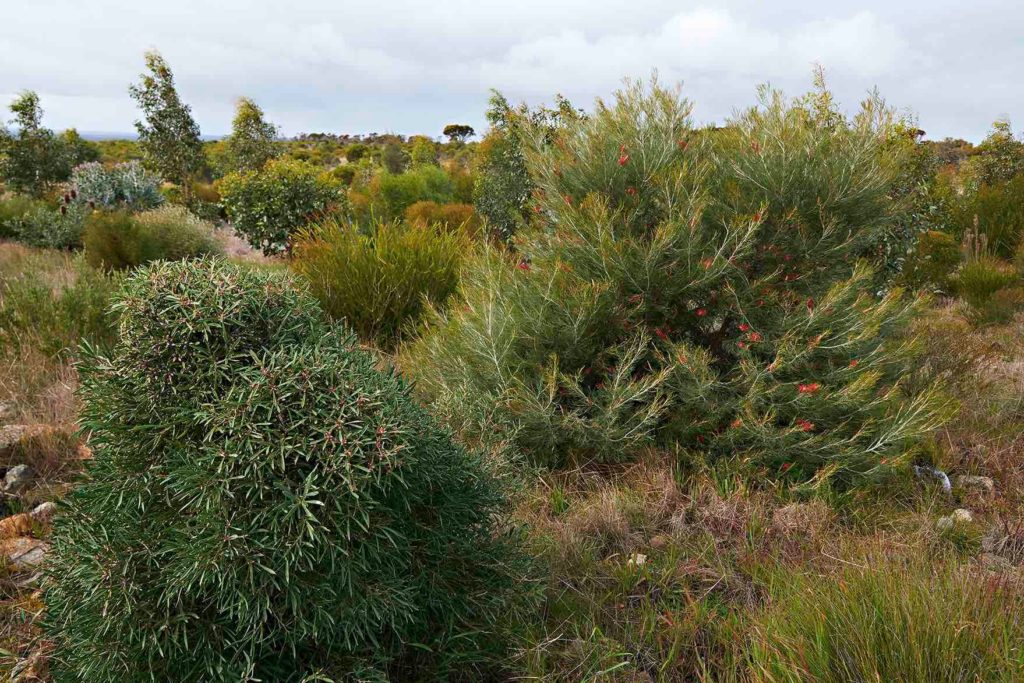
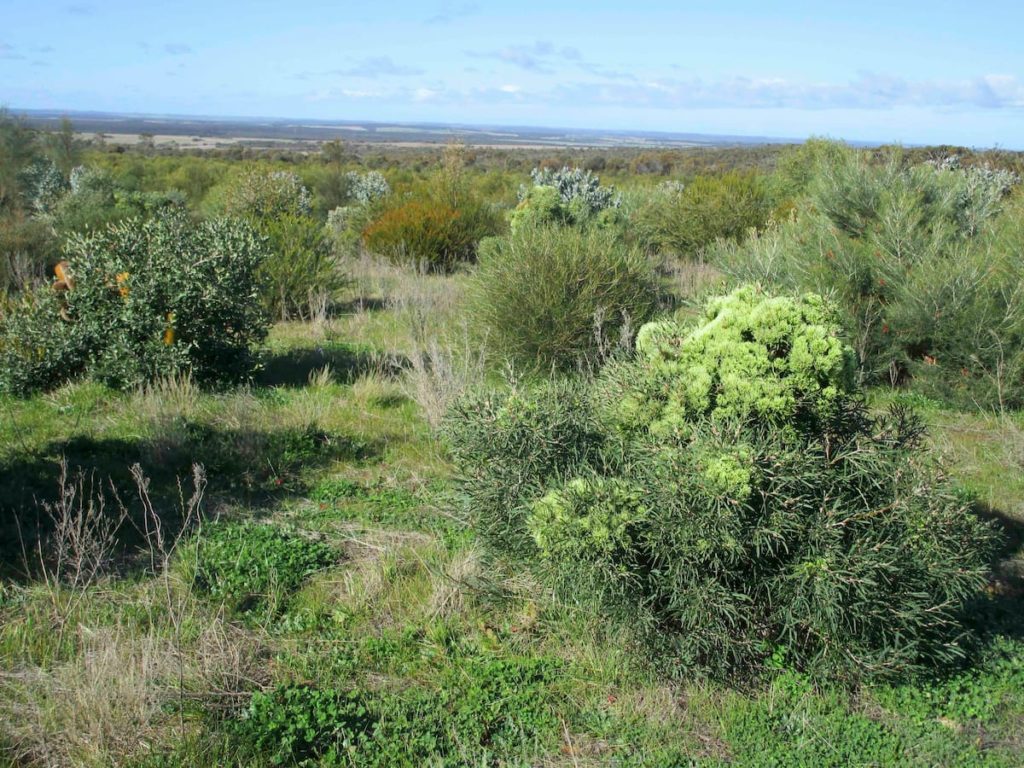

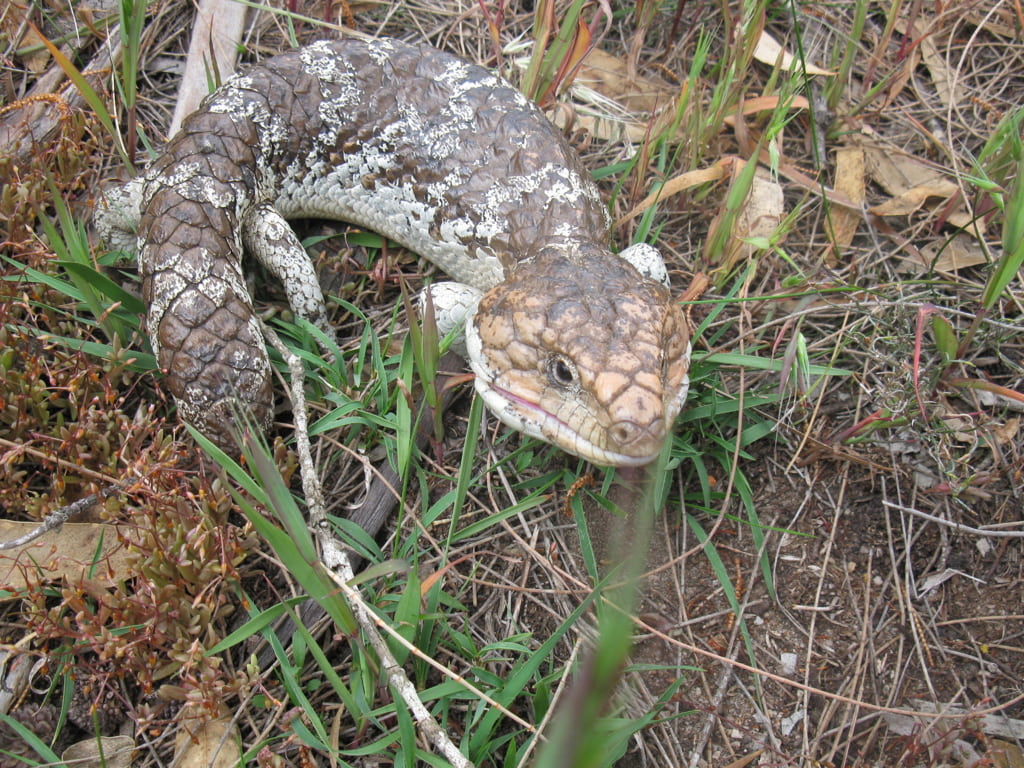
We often exclaim “Lucky possum” when planting seedlings.
Four large swales were constructed in the restoration area so as to retain as much water as possible in this dry landscape. These provide good access for most of the year and when full give the impression of living in Venice.
The 2 sets of 3 pictures below show the progression of the restoration.
It appeared for a while that the weeds might win.
Our move from 10 ha in SE Queensland to 1500 remote hectares in WA has been somewhat challenging but where else can you get your groceries delivered by mail, perfect silence at night and mind-expanding views across the landscape and a full semicircle of sky. We feel invigorated and rejuvenated.



